First To 50,000: Which Brand Of Pickup Truck Will Be The First To Tow 25 Tons?
In just three decades, the trailer towing capacities of heavy-duty pickup trucks has grown from roughly 10,000 pounds to 40,000 pounds. The exponential growth of this all-important truck metric has been meteoric, and there are zero indications these numbers won’t continue to soar in the years ahead. Clearly, the ability of a pickup truck to tow 20 tons is overkill—overkill on steroids. However, as ever-increasing sales figures indicate, the American public loves these road-owning behemoths, which begs the question: which of The Big Three will be the first to tow 50,000 pounds? And what reinforcement measures will truck makers have to perform in order to get there?
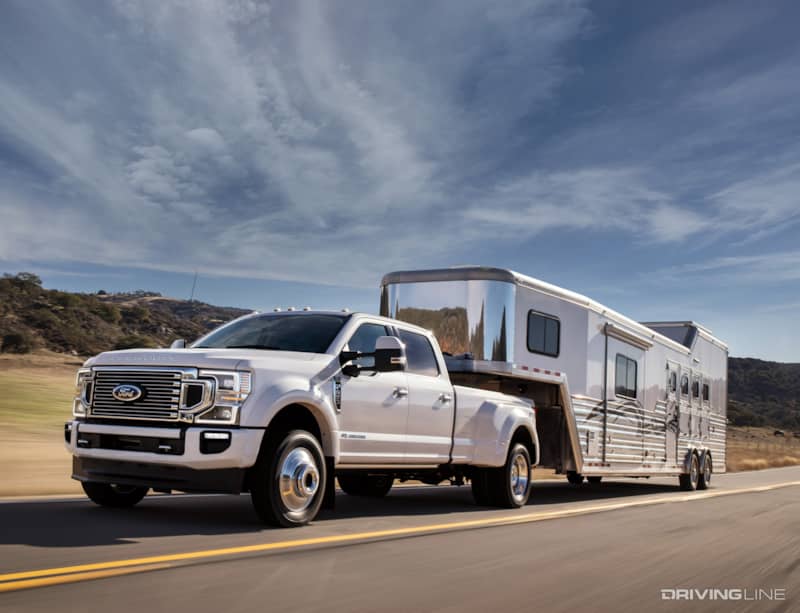
If the current trajectory is maintained, it’s only fair to expect more powerful engines (and possibly even larger displacement power plants), stronger transmissions, bigger axles and thicker fully boxed frames to infiltrate the ingredient pool. To be sure, it may be 10 years before we see this much towing capacity, but the march is on, nonetheless. Will Ford persist as the front-runner, thanks to its Class 3+ F-450 Super Duty, or will Ram produce a tank of a 3500 to regain the crown for all-out towing supremacy? And where does GM fit into all of this? Enjoy our best educated guess as to where Detroit’s rugged mountain movers are headed.
The Tech That Allowed Towing Numbers To Sky-Rocket: Powertrains
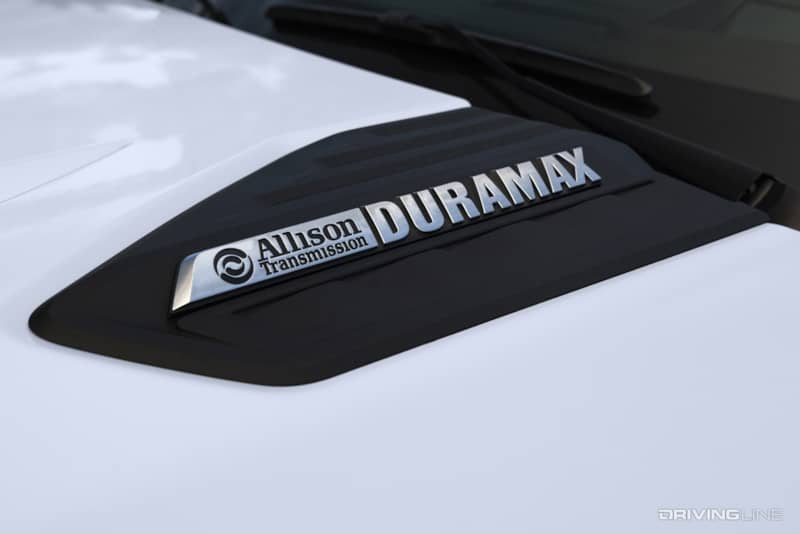
Although powertrains based around the use of big block gasoline V8’s used to match the diesel option in terms of maximum towing capacity, that’s no longer the case. Diesel engine technology has exploded over the past 20 years and, not surprisingly, so have trailering figures. Cutting-edge, high-pressure common-rail injection systems have allowed for more horsepower and exponentially more torque to be produced while simultaneously reducing tailpipe emissions. Variable geometry turbocharging has served to significantly improve the diesel engine’s drivability, maximizing both low-end torque and top-end horsepower. And finally, diesel-specific automatic transmissions—such as the Allison behind GM’s Duramax, the TorqShift paired with Ford’s Power Stroke and the Aisin coupled to Ram’s 6.7L Cummins—has brought commercial-grade robustness, highly intelligent electronics and tremendous efficiency to the table.
The Rest Of The Tech: Beef & Brawn
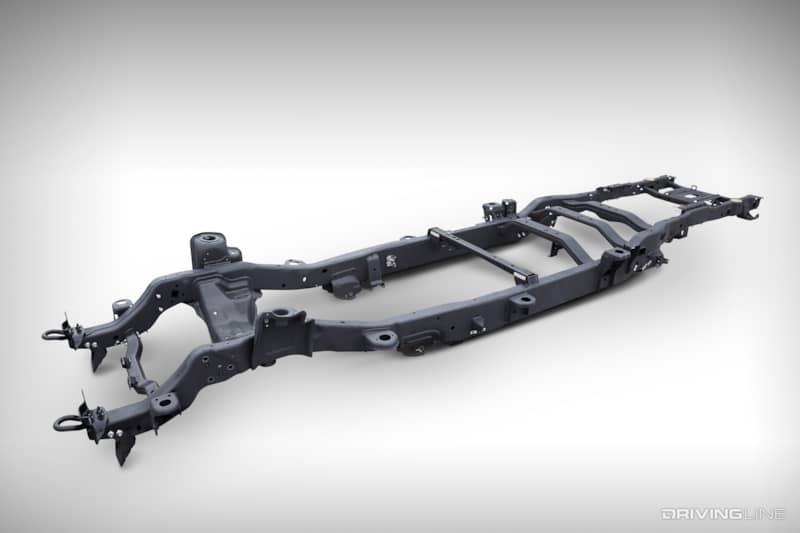
On the road toward gargantuan towing figures, The Big Three added considerably stronger frames to handle the strain. Axles (especially rear axles) have also been gradually upsized in order to ensure their survival, one good example being Ram’s switch from the AAM 11.5-inch to the 11.8-inch, and then to the current 12.0-inch (released when the 1,000 lb-ft high output 6.7L Cummins debuted in 2019). Bigger U-joints and stronger hitches were also upgraded during the progressive surge in towing capacities, while in-cab gizmos such as integrated trailer brake controllers and exhaust brakes have helped play a supporting role.
How Long Will It Take To Get To 50,000 LBS?
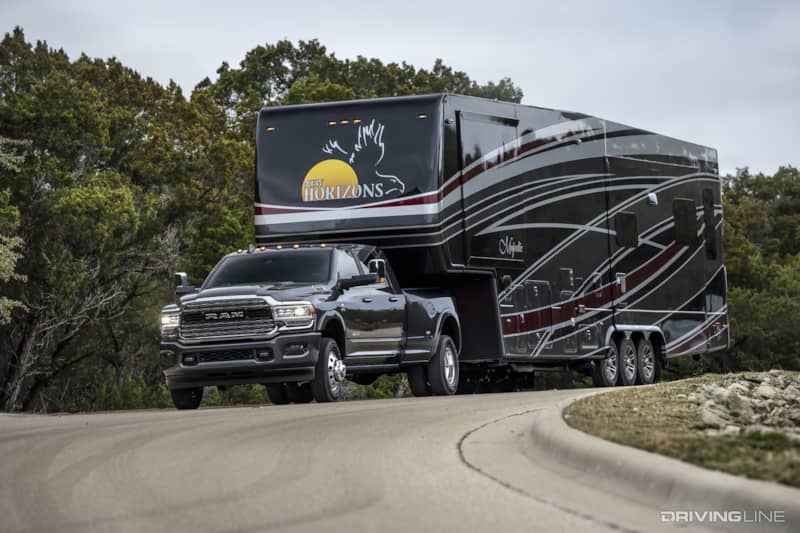
We think it could happen in the next 10 years, and here’s why. In 2001, a Dodge Ram 3500 could tow 15,100 pounds via gooseneck hitch. Eleven years later, that number jumped to 22,750 pounds for a ’12 model year, dual rear wheel, standard cab Ram 3500. By 2021, a properly equipped Ram 3500 could tow 37,100 lbs—so in 20 years’ time trailering capacity more than doubled. However, the magic 50,000-pound number will only occur if Ram (and GM) get serious about challenging Ford’s current, 40,000-pound figure. The longer Ford’s F-450 goes unchallenged, the longer the company may choose to sit and wait at the top.
What Will Be Required To Get There?
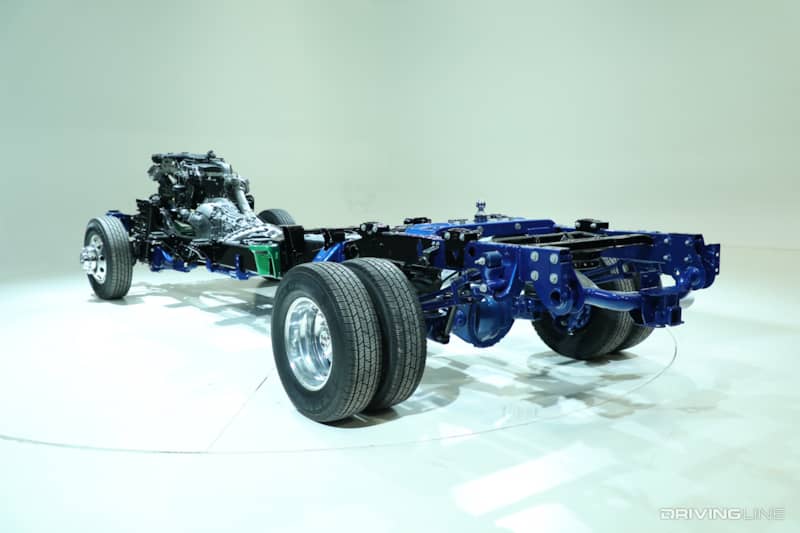
While The Big Three have all added significantly thicker, taller and stronger fully-boxed frames to their heavy-duty trucks already, their frames will likely need to be even bigger, thicker, taller and stronger to support 50,000-pound towing capacities. The task will also call for stiffer suspensions, larger and/or stronger driveshafts and U-joints, sturdier anti-sway bars and steering components and, larger-still rear axles with higher gross axle weight ratings. Of course, all of the above will lead to a heavier tow vehicle, potentially even a heavy-duty pickup truck with a curb weight approaching 9,000 pounds. The job for Ford, GM and Ram in keeping their GVWR’s under 14,000 pounds—a requirement in order for their vehicles to remain Class 3 trucks—may prove to be the trickiest part.
Bigger Engines, More Power, Or Both?
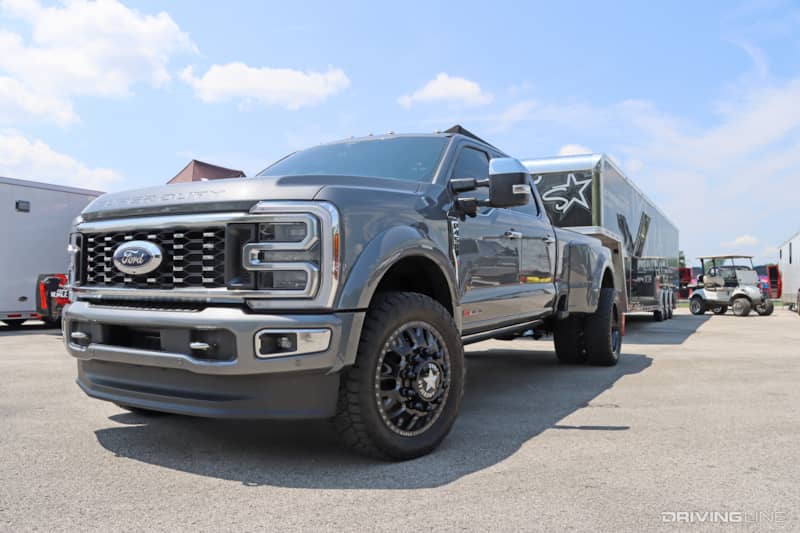
It might not be mandatory, but 50,000-pound tow ratings will likely be accompanied by 550 to 600 hp diesel engines—engines that will turn out at least 1,200 to 1,400 lb-ft of torque. If that happens, transmission size and strength may swell, too—along with ultra-smart, precisely controlled torque management measures being in place to keep them alive. Of course, improved stopping power would be a no-brainer, so expect larger service brakes and more aggressive exhaust braking (i.e. turbo braking) to enter the mix. All of this may sound like a lot of work on the surface but, just as we’ve progressively gone from 10,000 to 40,000-pound trailering capability in 30 years, on the current course each of The Big Three could very conceivably reach the 50,000-pound mark by 2034.
Why Ram Won’t Win The Race To 50K
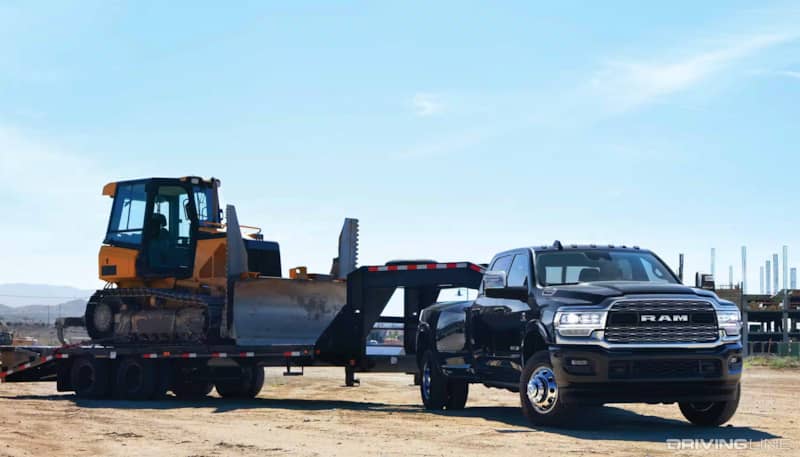
Unless something drastic changes at Stellantis, parent company of the Ram Trucks brand, don’t expect Ram to be the first to tow 50,000 pounds. It’s no secret that very little has changed in Ram’s heavy-duty lineup in recent years, the brand having become stagnant at present with no planned (yet direly needed) major redesign in the works. Adding insult to injury, the troubled automaker owes the U.S. government $459 million in fines, is plagued with quality control issues at the production level and its year-over-year net profits are down 48-percent compared to the company’s 2023 numbers. Will the good old days of chasing and periodically topping Ford in the towing game ever return?
Why GM HDs Won’t Be The First To Tow 50K
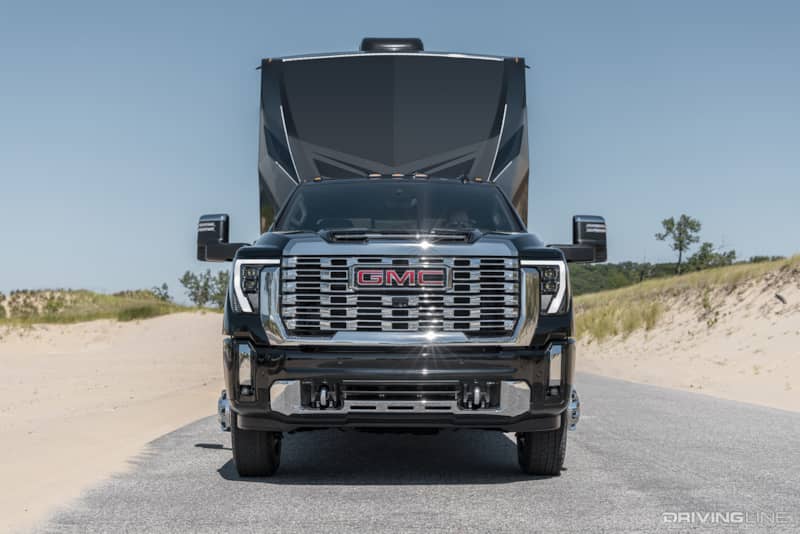
A story of contentment seems to have developed within the confines of General Motors. Aside from owning the best-in-class towing accolade for a brief period in 2020 (35,500 pounds) and 2021 (36,000 pounds), GM has made no formidable attempt to crush the competition—even when its HD line was redesigned for the ’24 model year. Nevertheless, the General is known to throw a surprise punch every now and then, be it by besting Ford and Ram in towing, payload, horsepower or torque figures. Look for GM to keep pace with the other two manufacturers in the race toward 50,000-pound towing capacity, but not lead it.
Why Ford Will (Likely) Lead The Way
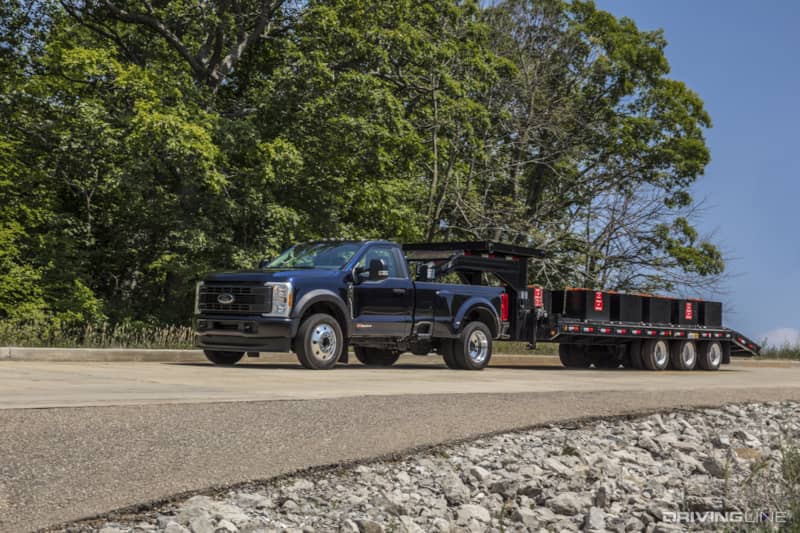
Ford has made it very clear over the past decade that it intends to own every performance category that matters to truck buyers—and it vehemently strikes back any time one of its competitors bests them. Case in point, see our account of the torque wars and how quickly Ford responded to all of Ram’s (Cummins’) lb-ft increases starting in 2013. At this point, it wouldn’t surprise us if Ford, with each new chassis and/or powertrain it produces, has plenty of built-in, reserve capacity baked into the cake. For example: Ford releases a new Super Duty, Ram offers a new 3500 that beats Ford’s tow rating, Ford responds the very next model year—without changing anything in any truly meaningful way—and reclaims the lead. We think this pattern suggests that Ford will continue to stay one step ahead of the game—especially in the race to 50,000-pound towing capacity.







